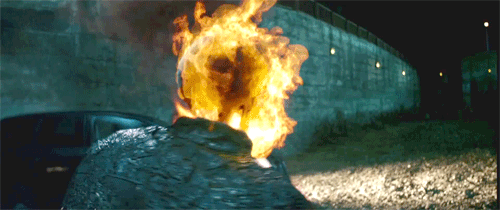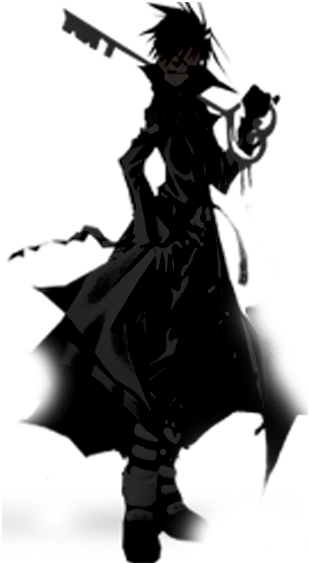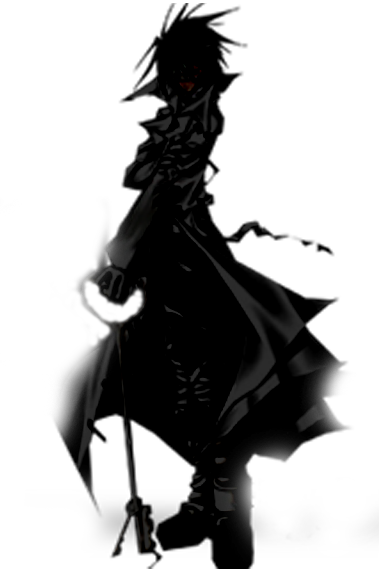Hack-and-slash games live or die by their combat. For some of these, the focus is on crunching through hordes of enemies, taking our large swathes of grunts with wide swings and little fanfare. Others focus on tighter experiences, sometimes bringing combatants up close for more intimate bouts. This emphasis on battle is what makes hack-and-slash games what they are. Ubisoft's For Honor feels akin to the Dark Souls games, with its attention to detail, need for quick reflexes, deft execution.
I love the thrill of combat in action games and the invariable spell-slinging and attack-cycling that comes with role-playing games. But I have never been interested in pursuing mastery in a game requiring you kill everyone as quickly as possible. For Honor grabbed me because it doesn't feel like your typical hack-and-slash game, especially when you're playing cooperatively in a team of four. You'll be hacking and slashing, but to do so with simple button-mashing is absolute folly. Broadly, For Honor requires you to do two things: know your battleground and know your enemy. Understanding your enemy includes observing the opposing team's wider movements and strategies, carefully marking who goes where, who is playing the heavy class and who is the easy target. Then, when your weapons are locked and your foe is so close you can see their eyes glinting through the slits in their helmet, For Honor takes on a surprising level of intimacy.
For Honor will have a story campaign, but my demo consisted of an hours-long session for its four-versus-four online multiplayer mode. There are 12 characters to choose from across three factions: the Knights, the Vikings, and the Samurai. Each character has its own unique weapon and combat style, as well as a backstory as unique as their presence in battle. These are further grouped into three areas of expertise labeled by each character's role on the battlefield: the Vanguard characters are the best all-around characters and the designated heavy class; the Assassin is lighter on their feet, makes a great support and is handy in one-on-one duels; and the Hybrid class is For Honor's advanced group, a line of warriors with myriad levels of attack that are great for more adaptable players looking to get fancy with their tactics.
Deeper than that, each character has its own unique weapon and armor sets, attack animations, and progression trees. Essentially, you're aren't just playing as a Viking, Knight, or Samurai--you also have a spread of 12 unique options for mastery, with weapons ranging from two-handed axes, to a sword and shield or a mace. And the loot you pick up in matches is always tied to your hero type, so if you want to level up your samurai, you'll find the right stuff for when you want it.
These characters should be thought of less like specific classes and more like vessels tailored to tightly focused specialties. For example, the Samurai Kensei is a heavyweight, slow-moving character with a nodachi, a long Japanese sword. His attack is high but his defense is weak, which means it's good for the Kensei to have backup from a lighter class. The Raider Viking has a great axe of bone, and is excellent as a support for characters like the Kensei. In my time with For Honor I played largely as the Kensei, fighting enemies away from capture points and running to my teammates' aid for a clutch, life-saving kill.
Roughly half of these playable characters are female. Each of the three factions has four heroes each: one is a man, one is a woman, and two can be played as either man or woman. Whatever character you pick, you and three others will be teaming up to take down another team of four across an enclosed map with three capture points. This can be done either online or in local splitscreen. There are several different gameplay modes for these large teams as well: Dominion, in which you must capture and control zones; Skirmish, where you must kill off your opponents quickly; and Elimination, a best-of-three game in which you whittle a team down to the last man standing with no respawn and have at it.
The goal of the game is to hold all three points long enough to whittle down the other team's score, and force them into a fight to the death. Holding all three territories for a significant amount of time will trigger a no-respawn rule for the other team, and it's up to your team to pick them all off before they can recapture any areas and force back the tide. Teamwork is essential, and without instruction my teammates and I found ourselves falling into a pattern. One person would immediately run to each capture point, while I ran into the middle and tried to swat away enemy grunts. When an opposing team member tried to pick a fight with one of my mates in capture zone, I would run to their aid and gang up on the offender.
3110629-fh_screenshot1.jpg
Of course, the other team is trying to do the same thing you are, so communication is key. We'd shout for each other's assistance when too many enemies were cooped up in one area, and when we were killed we'd take our respawn cooldown time to scour the battlefield from an eagle's eye view, letting our teammates know where the enemy was. Coordination happened without instruction, as For Honor immediately encourages everyone to be on point and in contact at all times. The honor you're fighting for isn't your own; it's that of your team.
The deadly dance of team combat in For Honor is exhilarating, but it pales compared to the feeling of a one-on-one battlefield showdown. My enemy would approach, I'd grip my controller tighter, and it would be on. For Honor's combat asks you to block and attack from three angles--left, right, and from above--with the directions mapped to the right stick. This simple structure allows for a wide variety of moves, such as attack fakeouts, parries, and deadly execution moves with brutal animations. These duels are tense and intimate, and are the bread and butter of For Honor. I felt like a master swordsman, executing a heavy attack and then canceling it at the last minute as my enemy brought their sword down over my head, swinging my own weapon up to parry them before sliding to the right and bringing my blade into their side.
And when you're cornered by multiple enemies with no way out, a button tap sends you into Revenge, an overpowered mode in which enemies can't harm you but the damage you deal is more powerful and cannot be blocked. In one case, I executed Revenge just in time to save my life as I held down a capture zone, fighting for my life against two enemy teammates while I waited for my own to come to my rescue. It's a small but powerful gameplay addition that prevents you from feeling unfairly overpowered, and after an hour playing the Revenge mode became my best friend. When I thought all was lost, it bought my rescuers time to come to my side.
In fact, there was never a moment where I felt overpowered, or where I felt the odds were unfairly against me. The team at Ubisoft Montreal has put a lot of work into balancing For Honor's 12 unique fighters, including bringing in weapons experts and taking creative liberties with fighting styles to make sure no one was too strong. For Honor finally launches on February 14 next year, and although it's been years in the making, it's looking incredibly promising.
Results 1 to 1 of 1
-
08-18-2016 #1
For Honor Trailer: Viking, Samurai, and Knight Factions
Downloads : 107 || Uploads : 38 || Rep Power : 17073 || Posts : 12,545 || Thanks : 1,039 || Thanked 1,987 Times in 1,322 Posts
Similar Threads
-
[YouTube] For Honor Samurai Trailer
By THUMBS in forum Youtube FamousReplies: 0Last Post: 09-15-2015, 07:12 PM -
[YouTube] Mortal Kombat X – Factions Trailer
By THUMBS in forum Youtube FamousReplies: 0Last Post: 02-06-2015, 06:25 PM -
[News] The Last of Us PS4 - Deadly New Factions DLC Trailer
By THUMBS in forum PS4 Game NewsReplies: 0Last Post: 12-09-2014, 07:18 PM -
[News] Viking Squad Gameplay Trailer (PS4)
By THUMBS in forum PS4 News, Updates, and RumorsReplies: 0Last Post: 10-04-2014, 05:31 PM -
[News] Viking Squad Announce Trailer | PS4
By THUMBS in forum PS4 News, Updates, and RumorsReplies: 0Last Post: 09-26-2014, 05:56 PM

















 ]
]
 Reply With Quote
Reply With Quote




